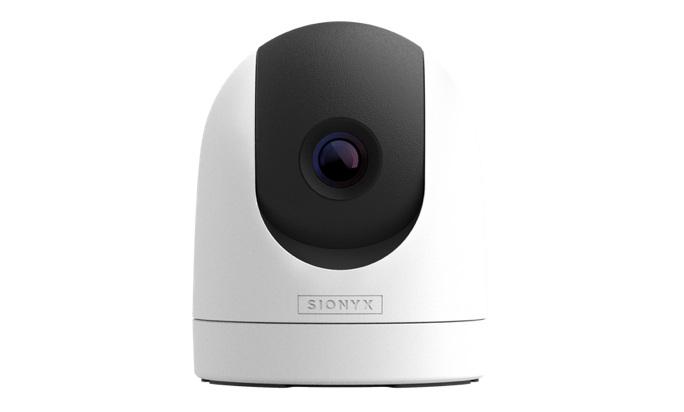Night Vision for Your Boat: What You Need to Know, Part 1

Navigating a tricky harbor or one you don’t know well can be a challenge even in daylight hours, but at night the difficulty is multiplied many times. This is also true for crossing a broad shoal in low light, where the markers are more likely to be pieces of PVC pipe stuck in the sand rather than 20’ (6.1 m) tall lighted channel markers.
And of course night operation always presents possible unmarked hazards that can pop up out of nowhere, including unlighted rowboats and kayaks dead ahead, or a palm log floating just awash.
Broadened Horizons
The risks are such that many weekend skippers opt to stay tied to the docks or the moorings from sundown to sunup. But being able to navigate with confidence and safety around the clock is a huge advantage whether you’re a relatively casual boater, a dedicated long-range passage-maker or offshore angler.
Infrared night vision and thermal vision systems now make the task of night-time navigation much easier and safer. But which system is right for your boat and the way you use it—and for your boating budget?

Types of Night Vision Enhancement Devices
There are essentially three types of night vision enhancement devices applicable to recreational boating and fishing:
- Analog light amplification
- Digital light amplification
- Thermal enhancement (heat detection)
Analog devices have been around for decades and are still useful. In general they have better definition than most digital systems and they use less battery power so they can be smaller and/or lighter. This is important for affordable handheld binocular and monocular systems. Conventional, relatively affordable night vision gear intensifies reflected star, moon or manmade light electronically
All analog night-vision devices share several main components that consist of an objective lens, an eye piece, a power supply, an image-boosting photocathode and photomultiplier.
The latter two combined are commonly referred to as an image intensifier tube.
Batteries in an analog system can last for months of normal recreational use, while digital systems may need battery replacement or recharging much more frequently.
One possible negative is that analog systems require infrared illuminators of 850 nanometers or lower to see in extreme darkness. This level of light is visible to wildlife — an issue for those who want to use their equipment for wildlife watching, less so for most boating uses.
The Lenses
The first lens in the system, called the objective lens, captures the dim visible light reflected from the subject along with some light from the low end of the infrared spectrum. This light consists of small particles called photons.
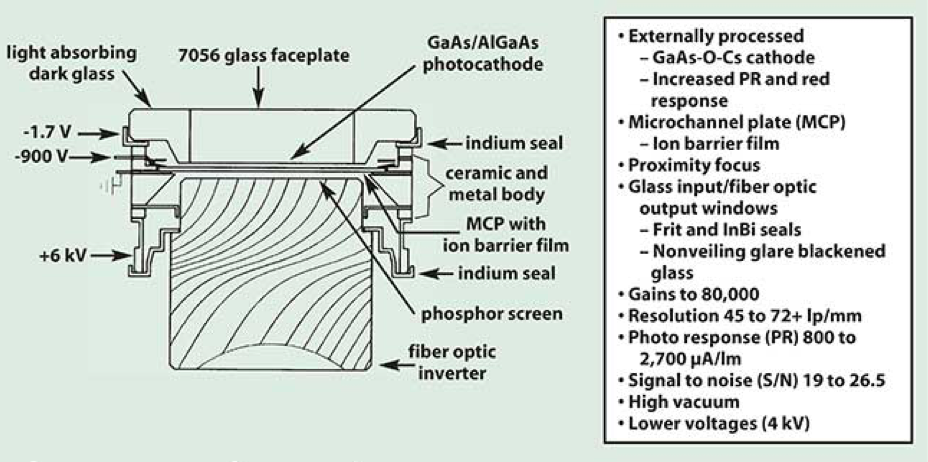
The first part of the tube is called the photocathode. This component converts the incoming photons into electrons. As you might remember from science class, photons, neutrons, and electrons are all small particles that make up the components of an atom. Photons and neutrons combine to create the nucleus of the atom — electrons swirl around the nucleus and carry an electrical charge.
The newly-created electrons flow into the second part of the vacuum tube, called the micro channel plate (MCP). The MCP is a small glass disc with millions of tiny holes that multiplies the number of electrons, thus amplifying the electric signal several thousand times over.
As the electrons exit the end of the image-intensifier tube they hit a phosphor-coated screen. The phosphors on the screen light up when hit, creating a glowing green image that is considerably brighter than the dim light that originally entered the objective lens. You view the phosphor image through an ocular lens that lets you focus and, if necessary, magnify the image.
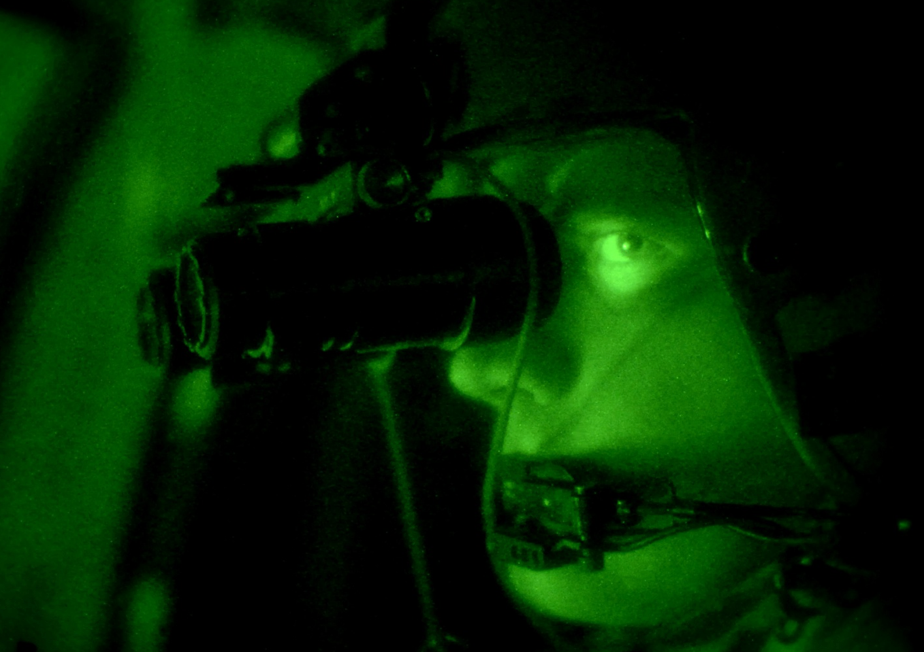
Why isn't this traditional night vision image in color? It has to do with converting the photons into electrons, which strips the color information from the image and converts the original colored light into a black and white image. Green phosphors were selected because green is the easiest color to view for extended periods in the dark, per the experts at Photonis.
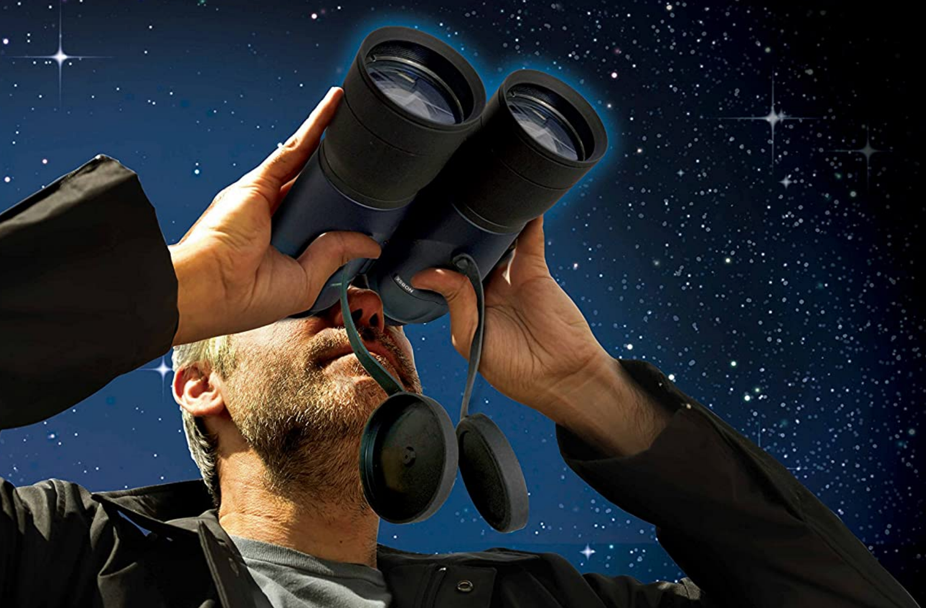
However, the life span of the light intensifier tubes in analog systems is limited—in heavy use, it can wear out in a few years. And turning them on in bright sunlight can damage the components.
Digital systems, on the other hand, last indefinitely and many can actually function as daytime binoculars or monoculars in addition to their duties after dark.

All digital systems can capture still and video imagery, useful for recording night-time voyages as well as perhaps for banking some tricky entries to remind yourself of the appropriate navigation for future cruises after dark.
Most night-vision devices today employ a digital version of traditional optoelectronic image enhancement technology. Digital image enhancement technology results in smaller, lighter-weight, more versatile night-vision devices. Some can stream to smartphones, tablets and other devices for easier viewing from anywhere in the boat.
With digital night vision, the light entering the objective lens is converted into a digital signal via a complementary metal-oxide-semiconductor (CMOS) sensor, like the ones used in digital video cameras. The digital image is enhanced electronically and magnified several times, then sent to an LCD display for viewing. The larger the CMOS sensor, the higher the resolution of the image you see. Many current digital night-vision devices display and record full 1080p HD video.
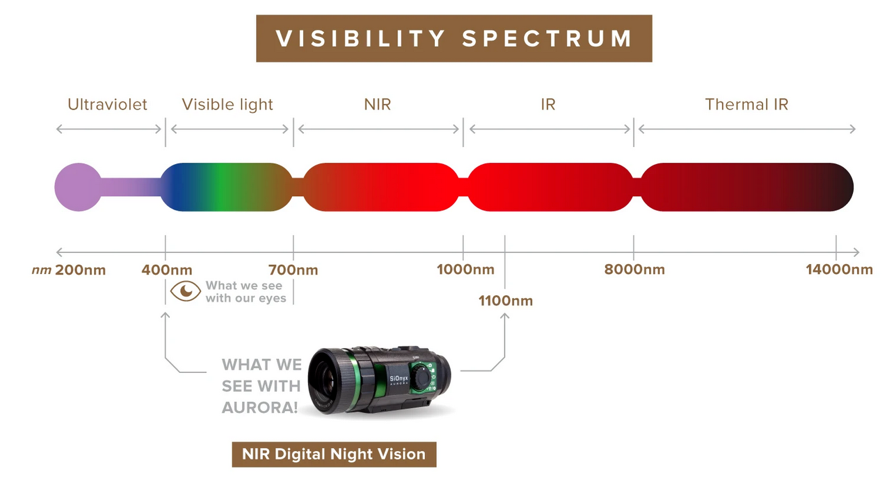
In addition to direct viewing via the LCD screen, many digital night-vision devices can be connected to other equipment, such as still or video cameras, for remote viewing. Digital night-vision signals can also be stored digitally on SD cards, USB drives, or other storage devices.
Some digital night-vision devices feature WiFi capability for easy sharing and live-streaming of videos and images to smartphones, computers, and other devices.
Digital technology has revolutionized the night-vision industry. Each subsequent generation of CMOS sensor has produced better images at lower costs. While the images from early digital night vision devices weren't near as detailed as traditional optical images, current-generation devices result in extremely high-resolution displays. Many high-end digital night vision devices even reproduce color images instead of old-school glowing green images.
